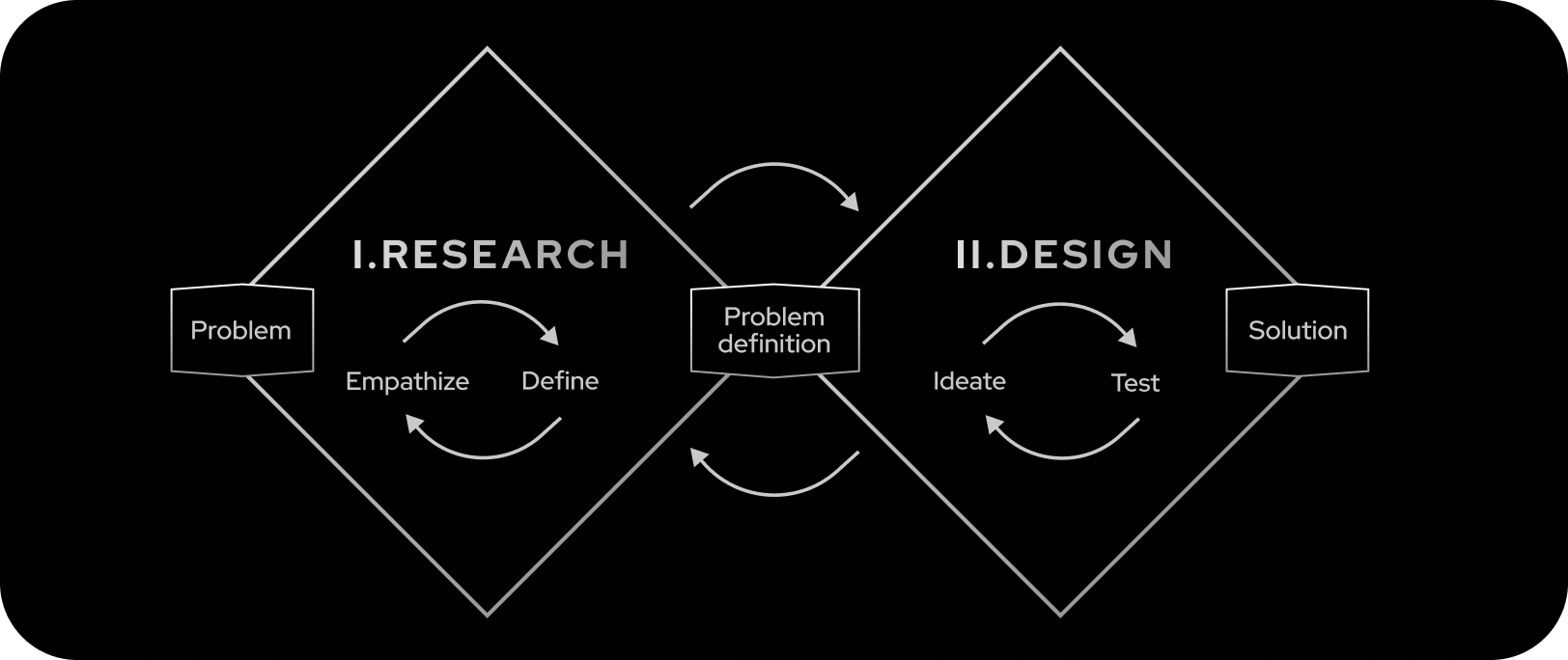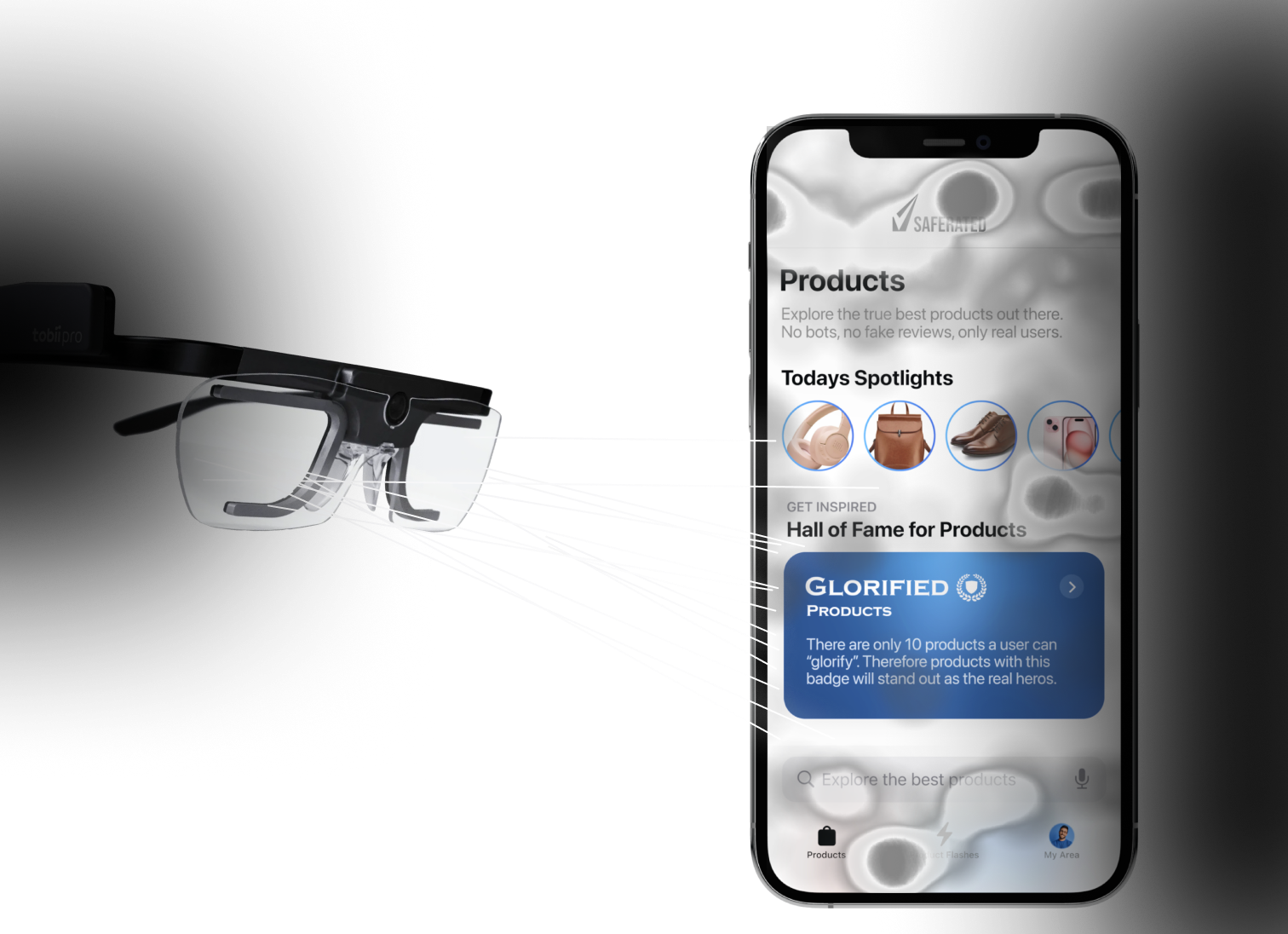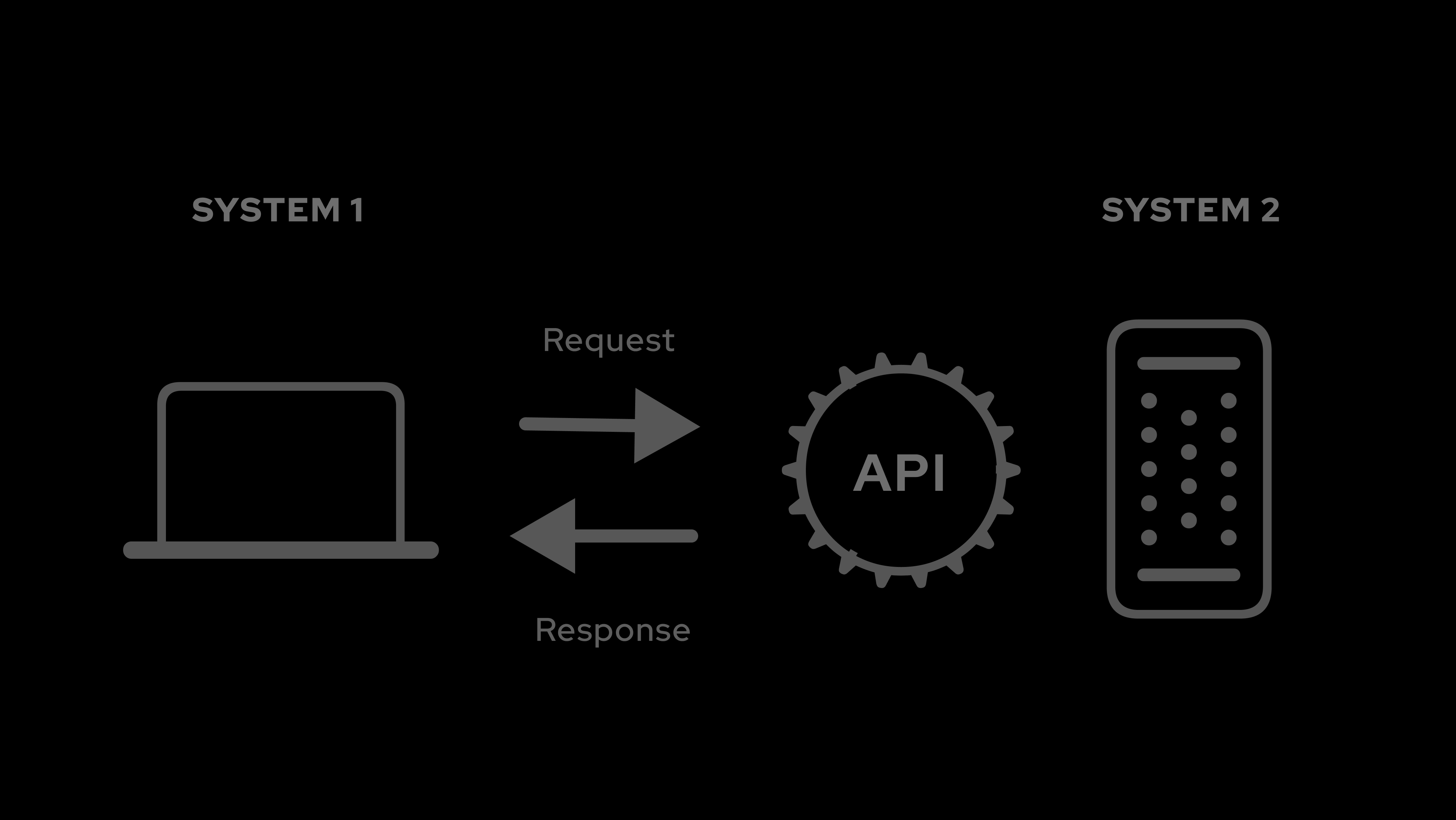

Fake reviews and bots make online shopping frustrating. With SafeRated, we created a secure, AI-verified space where users are authentically registered, ensuring credible product reviews and more clarity which products are truly good.
In a team of two, I led the research, design, and prototyping phases, using the design thinking process – #Double Diamond . I incorporated the #ISO’s 9241-110 dialogue principles and #Don Norman's fundamental design principles as well as the #Heuristics by Jakob Nielsen . In addition to the prototype, we developed the app with Ionic, web scraping, and Firebase OTP, blending Apple’s guidelines with custom elements—created during my studies at University of Osnabrück.

Analysis of average values and standard deviations for each dimension in Excel.
75% often distrust online reviews (low scores in “reliability”).
82% would like more transparency (high desire for “clarity”).
68% would be more likely to buy if the reviews were checked by a verification process (need for “reliability” and “efficiency”).
Audio recordings transcribed. Affinity mapping for clustering central problems.

Yes, it’s a real human problem. Users demand more transparency and trustworthiness for online reviews and e-commerce platforms overall.
Usability test with thinking aloud method for first impressions regarding general navigability and flows. (9 participants)
Usability testing with mixed methods: Eyetracking (quantitative) + Thinking Aloud (qualitative) + UEQ with 12 participants (quantitative)
84% navigated easily through the app (efficiency, controllability)
92% found the design to be professional and appealing (attractiveness, aesthetics)
78% enjoyed using the app thanks to “Spotlights” and “Glorified Products” (stimulation, motivation to use)
Problem example: Difficulty finding product options such as “Share” or “Save”. “Scan behavior” and expressed confusion.
Improvement example: Integration of more product options like "save", "like" or "share".

Final fine-tuning of the design with the help of usability testing and thinking aloud.
Problem examples: Unclear hierarchy for price, title and ratings.
Lack of signifiers for interactive elements and unclear affordance.
Improvement examples: Price in larger font and further adjustments.
Interactive elements highlighted in bright blue for clear affordance.


We developed SafeRated using Ionic and Angular, implementing critical features like Firebase Authentication and web scraping to enhance security and credibility. Here are a few key insights from the app development process.
For secure user registration, we used Firebase Authentication with phone number OTP verification. This ensures users are authenticated securely via a one-time password sent to their phone.
firebase.auth().signInWithPhoneNumber(this.phoneNumber, this.recaptchaVerifier)
.then((confirmationResult) => {
this.confirmationResult = confirmationResult;
});
Once the OTP is verified, user data is securely saved:
this.confirmationResult.confirm(this.otp).then(() => {
this.userService.saveUserData(this.phoneNumber, this.username);
});

To verify user credibility, we integrated ScraperAPI, which scrapes public data from platforms like LinkedIn. This data helps assign a trust level to users based on their online presence.
fetchSearchResults() {
this.apiService.getResults(this.username).subscribe(response => {
this.results = response;
this.updateTrustLevel();
});
}
updateTrustLevel() {
if (this.results.length > 50) this.trustLevel = 5;
else if (this.results.length > 20) this.trustLevel = 4;
}
